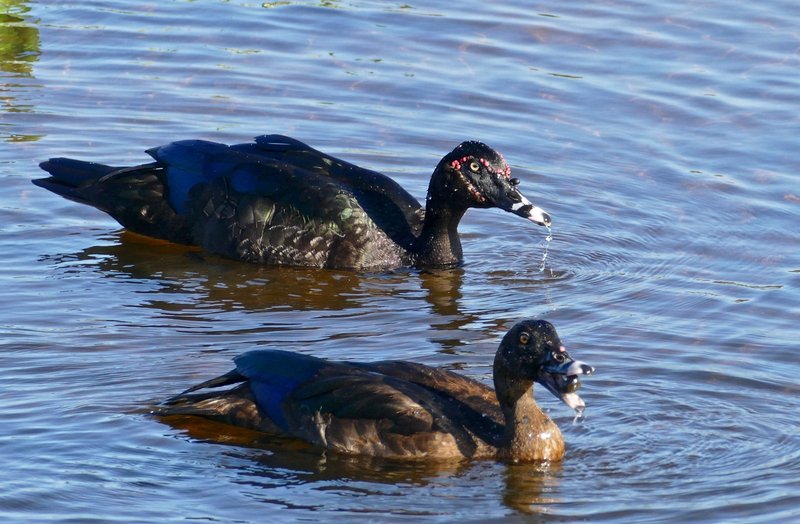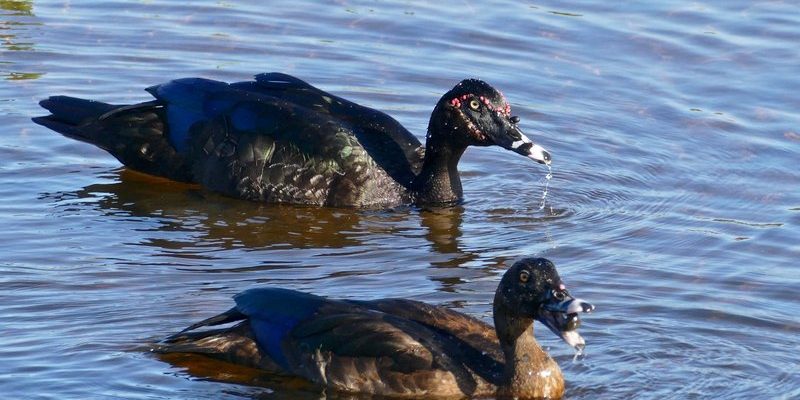
Honestly, figuring out the conservation status of any animal can feel like unraveling a mystery novel. Sometimes it’s straightforward, like a clear-cut case of endangerment, and other times it’s a bit murky, dependent on where the birds live and how they interact with their environment. So, let’s break it down together, like two friends chatting about what we’ve discovered over coffee.
A Brief Overview of the Muscovy Duck
The Muscovy duck (*Cairina moschata*) is native to Central and South America, but it’s also found in parts of North America. These ducks can be quite surprising; unlike most ducks, they don’t quack. Instead, they make a variety of sounds, including grunts and whistles. Isn’t that fascinating? Their unique communication adds to their charm.
Muscovy ducks are also known for their striking looks. They have a mix of black, white, and brown feathers, often reflecting a beautiful sheen in the sunlight. They can grow quite large—much bigger than your average mallard—and are recognized by their distinct red facial markings. Not only do they look different, but they’re also somewhat different in behavior compared to typical domestic ducks.
You might be wondering why these ducks are even a topic of discussion in conservation circles. Well, they have a complex relationship with humans. Their adaptability allows them to thrive in urban areas, which can be a double-edged sword when it comes to conservation efforts.
Conservation Status: Are They Threatened?
So, what’s the scoop on the Muscovy duck’s conservation status? According to the International Union for Conservation of Nature (IUCN), the Muscovy duck is actually classified as “Least Concern.” This means, for now, they’re not considered threatened or endangered on a global scale. However, that doesn’t tell the whole story.
In some areas, like parts of the United States, Muscovy ducks can be seen as invasive. Because they breed with domestic ducks, they can introduce genetic changes that threaten local duck populations. This adds a layer of complexity to their conservation status; while they aren’t endangered globally, local populations can face significant challenges.
Here’s the thing: while the species as a whole is thriving, localized threats such as habitat loss, hunting, and competition from domestic ducks do pose risks. So, while you might spot a Muscovy duck paddling along a city park pond, it’s important to keep in mind that their future is tied to how we manage their interactions with the environment.
Habitat and Distribution
Muscovy ducks are incredibly adaptable. They thrive in a variety of habitats, from subtropical and tropical forests to urban parks. They’re comfortable in wetlands, lakes, and even rivers. This flexibility is part of the reason they’ve spread beyond their native regions.
In their native range of Central and South America, these ducks can be found in a variety of environments, often in areas with abundant water sources. They build their nests in trees or shrubs, preferring places that provide cover from predators. In areas where they’re considered invasive, such as parts of the U.S., they often inhabit similar water bodies, demonstrating their resilience.
You might even see them mingling in urban areas, scavenging for food where humans gather. It’s quite a sight to witness, but it raises questions about how we manage wildlife in our neighborhoods. The presence of Muscovy ducks in cities can sometimes lead to conflicts, especially regarding their feeding habits and breeding behaviors.
Threats to the Muscovy Duck
Despite their current classification as “Least Concern,” Muscovy ducks face various threats that could impact their populations. Habitat loss is a significant concern. Urbanization, agriculture, and industrial development can reduce the natural habitats they rely on.
Another pressing issue is illegal hunting. In some regions, hunting for sport or food threatens local populations. While hunting regulations vary by region, enforcement can be tricky, leading to overharvesting in certain areas.
Additionally, the presence of domestic ducks can pose challenges. When Muscovy ducks breed with domestic ducks, it can dilute their genetic integrity, leading to changes in populations that aren’t necessarily beneficial. This interbreeding can alter behaviors and survival strategies, making it harder for Muscovy ducks to adapt to environmental changes.
Conservation Efforts
Efforts to protect the Muscovy duck primarily focus on habitat preservation and public education. Organizations often work to maintain wetlands and natural environments that support duck populations. This is crucial, as these habitats are not only vital for ducks but also for numerous other wildlife species.
Public awareness campaigns are essential to educate communities about the importance of co-existing with wildlife. Simple actions like not feeding wild ducks can help reduce their dependency on humans and encourage them to forage naturally, which ultimately benefits their health and survival rates.
Furthermore, regulatory measures are employed in areas where Muscovy ducks are invasive. Managing their populations through licensing and conservation policies helps protect native species while ensuring Muscovy ducks can thrive without causing ecological disruptions.
In summary, the Muscovy duck is currently classified as “Least Concern,” enjoying a relatively stable population globally. However, localized threats pose risks, and understanding these nuances is key to their conservation. As they navigate urban environments and face competition from domestic ducks, ongoing efforts in habitat preservation and public education remain crucial.
So, when you see a Muscovy duck next time—perhaps strutting confidently by a park pond—remember that their story is a reminder of how interconnected our ecosystems are. Protecting them ultimately helps preserve the beauty and diversity of wildlife, which benefits us all.

